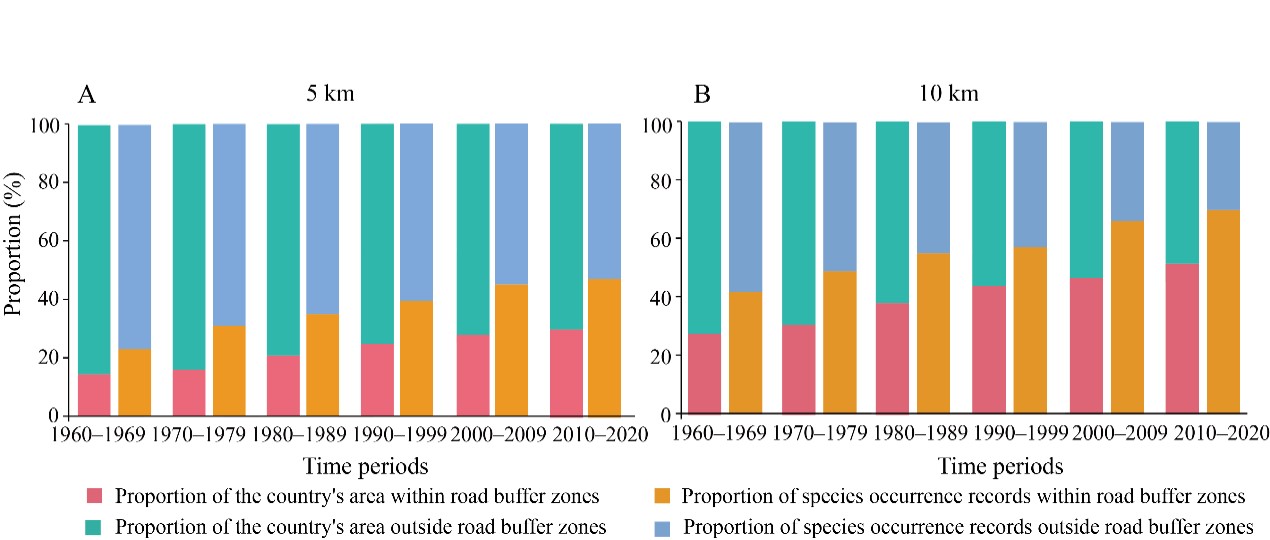Impacts of road networks on the geography of floristic collections in China
Published 15 May, 2025
The collection of biological specimens is crucial for understanding species distribution and formulating biodiversity conservation strategies. Notably, the locations where biological specimens are collected are often influenced by natural environmental and socioeconomic factors. One such influence is the "road-map effect" — the tendency to conduct biological surveys and collections near roads or in areas with convenient transportation.
China is one of the countries with the highest plant diversity in the world. Since extensive plant surveys and collections began in the early 20th century, more than 10 million plant specimens have been preserved in herbaria. In recent decades, China's road network has expanded nearly tenfold since the 1960s, markedly facilitating plant survey and collection efforts. However, this may have led to a stronger dependence of plant survey and collection work on the road network, exacerbating the bias in the spatial distribution of plant specimen data.
To that end, a research team led by Prof Keping Ma from the Institute of Botany, Chinese Academy of Sciences, systematically quantified the spatial relationship between the distribution pattern of plant specimens in China, and the road network and its changing trend since the 1960s, using long-term plant specimen distribution and road network data.
Their analysis found a significant "road-map effect" in the collection of plant specimens in China. Even after accounting for the influence of the expansion of the road network, the intensity of the "road-map effect" still shows a gradually increasing trend from the 1960s to the 2010s, indicating that plant specimen collection activities are becoming increasingly reliant on the road network.
These findings, published in Plant Diversity, highlight the need or future plant resource surveys to devise scientific sampling strategies, prioritizing areas with limited road network coverage to enhance the representativeness and completeness of survey outcomes.

Contact the author: Wenjing Yang, yangwenjing@jxnu.edu.cn
Funder: This research was funded by National Natural Science Foundation of China (32460276, 32060275), and Jiangxi Provincial Natural Science Foundation (20232BAB203058, 20242BAB27001).